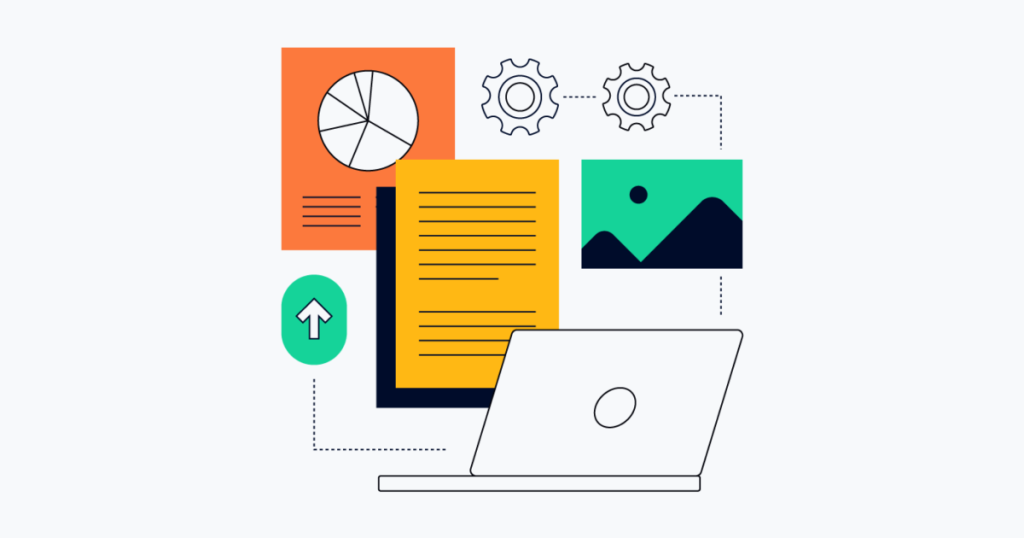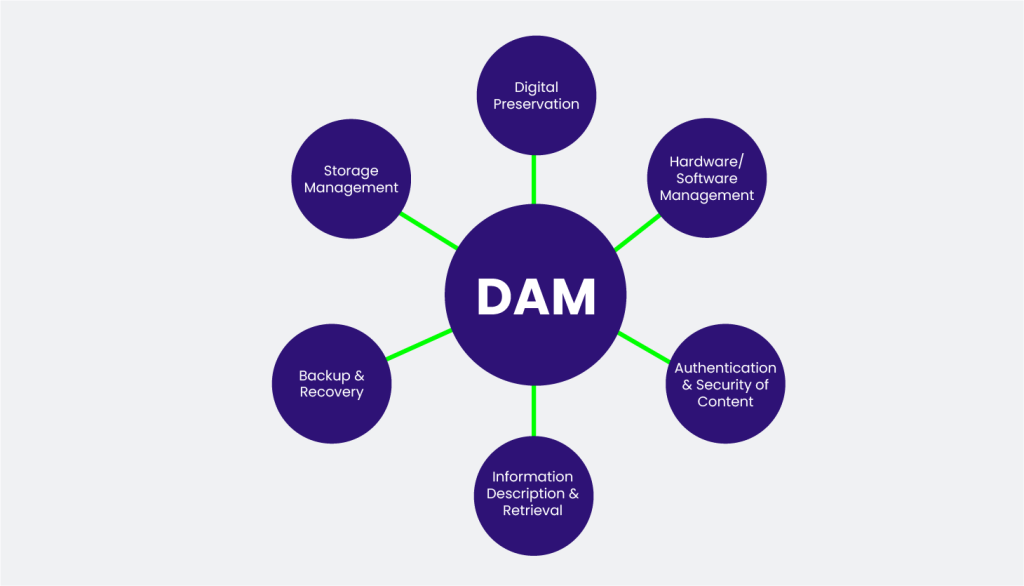
In today’s fast-paced digital landscape, businesses must manage a growing volume of digital assets, such as images, videos, documents, and other multimedia content. As your content library grows, so does the complexity of managing and organizing it effectively. This is where a Digital Asset Management (DAM) system becomes a game changer. Implementing a DAM system can streamline your workflows, improve collaboration, and ensure that all team members have access to the right assets at the right time.
In this blog, we’ll explore how to implement a DAM system into your business smoothly, without the usual headaches, and highlight how Wizbrand’s DAM software is designed to help you achieve this with ease.
Step 1: Define Your DAM Goals
Before diving into the implementation of a DAM system, it’s essential to clarify your goals. Ask yourself: What do you need a DAM system for? Are you looking to organize images, videos, and documents for marketing campaigns? Or do you need a more robust system for managing internal documents and media assets for different departments?
By defining your goals early on, you’ll be able to choose the right DAM solution and establish a clear roadmap for implementation.
Step 2: Choose the Right DAM Software
One of the key factors in ensuring a smooth DAM implementation is choosing the right software. A good DAM solution should offer flexibility, scalability, and the ability to integrate seamlessly with your existing tools and systems. Wizbrand, a leading Digital Asset Management platform, is built to streamline digital workflows, making it easier for businesses to manage, access, and share digital content across teams. Wizbrand’s robust features include:
- Centralized Asset Repository: All your digital assets are stored in one location, making it easy to find, organize, and share content.
- Advanced Search and Tagging: With Wizbrand, you can tag assets with keywords, categories, and metadata, ensuring that your team can quickly locate the content they need.
- Team Collaboration: Wizbrand enables seamless collaboration, allowing multiple team members to work on assets in real-time without the risk of losing track of updates.
Incorporating a solution like Wizbrand will help eliminate the chaos of managing files across different systems and reduce the time spent searching for assets.
Step 3: Prepare Your Content for the DAM System
Once you’ve selected your DAM software, it’s time to prepare your digital assets for migration. This involves categorizing your assets, tagging them with relevant metadata, and ensuring that they are properly formatted for easy upload.
Consider the following steps when preparing your content:
- Organize Assets into Folders: Categorize your digital content into logical folders, making it easy for your team to find and manage files later.
- Add Metadata: Metadata helps you search for assets more efficiently. Tags, descriptions, and categories are great ways to organize your content.
- Ensure Proper File Formats: Make sure that the digital assets you’re uploading are in compatible file formats for your DAM system.
By cleaning up and organizing your content before migrating to the DAM system, you’ll be able to minimize disruptions during the transition process.

Step 4: Integrate DAM with Your Existing Tools
Another essential step in implementing a DAM system is ensuring it integrates with the tools and software you are already using. Whether it’s your CRM, project management software, or marketing platform, integration ensures that your DAM solution works seamlessly within your existing digital ecosystem.
Wizbrand offers integration with popular platforms like Salesforce, HubSpot, and other third-party software, making it easier to align your digital assets with your existing workflow. By connecting your DAM system to other tools, you can automate tasks, reduce manual work, and increase overall productivity.
For example, if you’re using SEO Management Software, Wizbrand allows you to manage your content assets in one place while optimizing for SEO. This eliminates the need to search through multiple platforms when working on content creation and optimization.
Step 5: Train Your Team
A critical yet often overlooked step is training your team to use the new DAM system effectively. Even the most advanced DAM software can fall short if your team doesn’t know how to maximize its features. Invest time in providing training sessions that cover key functionalities, best practices, and how the system can improve their workflows.
Wizbrand makes it easy for businesses to train their teams, offering user-friendly features and tutorials. With Best DAM Tools in the world available at your fingertips, your team can get up to speed quickly and start using the system to its full potential.
Step 6: Monitor and Optimize the System
Once your DAM system is up and running, it’s essential to monitor its performance and make any necessary adjustments. Regularly assess how well the system is meeting your business’s needs, and gather feedback from your team on areas of improvement. You can optimize the system by:
- Regularly updating metadata and tagging for new assets.
- Archiving outdated or unused assets to keep the system clean and efficient.
- Analyzing user feedback to make improvements to the user interface or workflow.
With Wizbrand’s detailed reporting features, you can track asset usage, user activity, and workflow performance to identify areas for improvement and ensure the system is working at its best.
Conclusion
Implementing a DAM system doesn’t have to be a complex or overwhelming process. By defining your goals, choosing the right software like Wizbrand, preparing your assets, integrating with existing tools, training your team, and monitoring the system, you can successfully implement a DAM system that streamlines your digital workflows and enhances team collaboration.

If you’re ready to take your digital asset management to the next level, explore Wizbrand today. Our solution is designed to help businesses like yours manage, share, and optimize their digital assets with ease. Say goodbye to the headache and hello to seamless asset management .